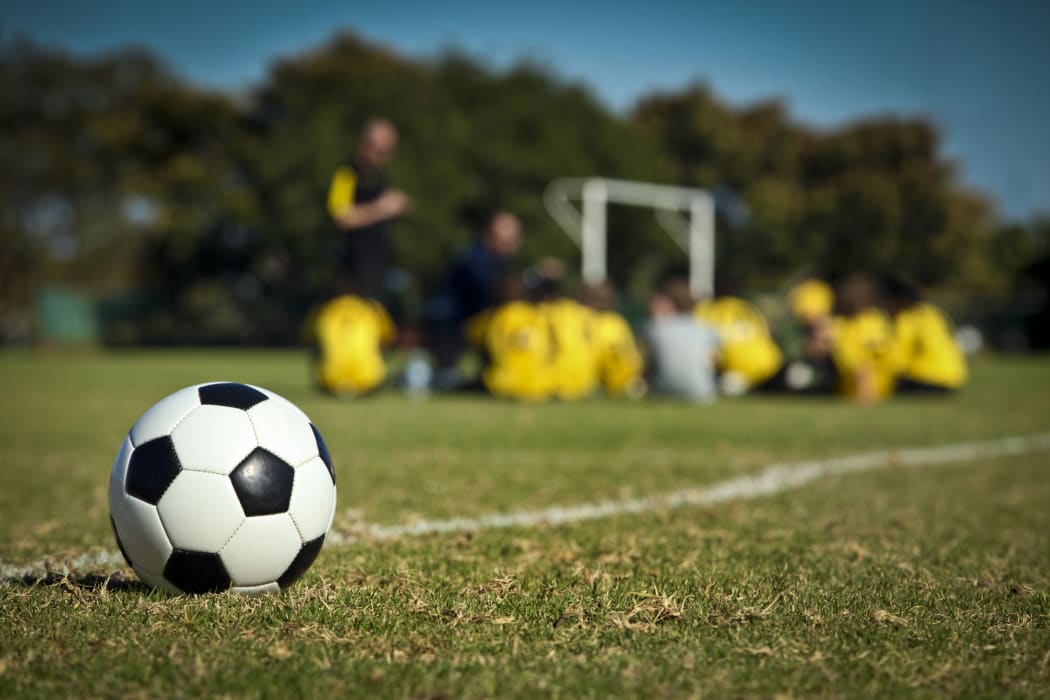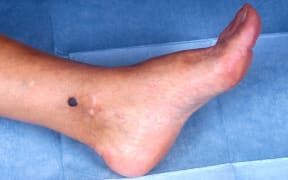New Zealand secondary schools aren't providing enough sun-protection for their students, a new study has found.

Few students waiting to play sports wear hats, and schools are not always providing sunscreen, a study has found. Photo: 123RF
Researchers from Otago University observed sports days at 10 schools around Dunedin.
They found only a quarter of adult supervisors and as little as 3 percent of students wore hats while waiting to compete.
Shade wasn't provided in most areas, and only half of the schools provided sunscreen.
The findings followed a survey of 211 high schools this month that found most failed to provide basic sun protection to its students.
New Zealand has been rated as having the highest rates of melanoma in the world.
The head of the Secondary Principals' Association of New Zealand, Sandy Pasley, admitted secondary schools could do a lot better.
"We note that primary schools do a really good job of teaching sun-smart ways of operating to young students."
"I'm sure it happens in health lessons as part of the compulsory curriculum, especially in junior secondary schools, but I think it's a matter then of taking it further in taking actions to stop young people from getting melanoma."
She said while most schools would have sun screen available, many needed to provide more shade and introduce wide-brimmed hats as part of their uniform.
"But that's a change that will require not only schools but also wider society to be involved in."
"That it be really accepted that wearing a wide-brimmed hat is really important in New Zealand's climate."
Jacob Waelen, 22, has just had moles on his back removed for the third time.
The first was when he was a 16-year-old student at St Kentigern College.
"My mum sort of noticed that I had quite a few moles on my back, and figured it was a bit odd, and said 'let's go chat to the doctor about that'," Mr Waelen said.
"They did the whole scan thing, then they decided 'yup, we need to cut these out'."
He said he now received regular check ups, and was a lot more careful about being out in the sun, but that was not something he thought about when he was at school.
"You're told you gotta wear your hat when you're in primary school and all that jazz, and you know you're supposed to wear sunblock and you know it's bad for your skin."
"But you kinda think wrinkling, and you think looking bad and getting burnt, but you don't really think 'cancer' when you're 16."
New Zealand Cancer Society chief executive Claire Austin said young people were particularly at risk.
"Basically the evidence shows 90 percent of skin cancers are attributed to excessive UV exposure, particularly if you're under the age of 25."
Ms Austin said there was a lot of investment in sun protection in primary schools, but that needed to extend all the way to secondary schools.
She said it was about education and building awareness, but also about resources.
"I'm sure schools work very hard in creating a safe environment for their young people,"
"But it's also investing in programs and investing in resources, so things like sun hats are available, particularly if families can't afford it."
She said given how serious the issue of melanoma was in New Zealand, it should be as much a part of the curriculum as safe sex, alcohol use and exercise.






